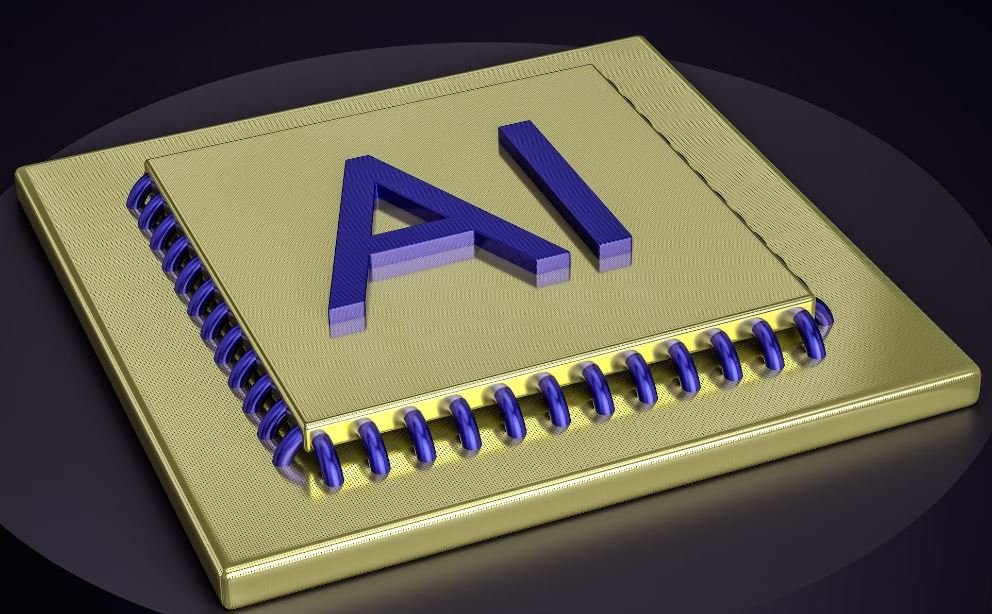Tesla Motors: Business Model Configuration
Tesla Motors, founded by Elon Musk in 2003, has rapidly become one of the most prominent and innovative companies in the automotive industry. Known for its electric vehicles, cutting-edge technology, and sustainability focus, Tesla has revolutionized the way people think about transportation. This article will explore Tesla’s unique business model configuration and its impact on the industry.
Key Takeaways:
- Tesla Motors is a leading electric vehicle manufacturer founded by Elon Musk.
- Its business model configuration focuses on sustainable energy, vertical integration, and direct sales.
- Tesla’s unique approach challenges traditional automotive industry norms and disrupts the market.
- By leveraging advanced technology and software capabilities, Tesla provides a superior user experience.
- The company’s success is driven by its strong brand image and dedicated customer base.
The Tesla Business Model:
Tesla’s business model configuration sets it apart from traditional automakers in several key ways. First and foremost, it prioritizes sustainable energy by manufacturing electric vehicles instead of relying on internal combustion engines. This innovative approach aligns with its mission to accelerate the world’s transition to sustainable energy.
Additionally, Tesla follows a strategy of vertical integration, which means it controls various stages of its production process in-house. The company develops and manufactures many components, including batteries, electric drivetrains, and software. This integration allows Tesla to maintain quality control and optimize efficiency while reducing dependency on external suppliers.
Furthermore, Tesla employs a direct sales model, bypassing traditional dealership networks. Customers can order vehicles online or visit Tesla-owned showrooms, creating a streamlined purchasing experience. This approach enables Tesla to have more control over the sales process, showcase its products in a unique way, and build a direct relationship with customers.
Table 1: Tesla Motors Product Line
| Model | Range (miles) | Acceleration (0-60 mph) |
|---|---|---|
| Model S | 370 | 2.3 seconds |
| Model 3 | 300 | 3.1 seconds |
| Model X | 325 | 2.5 seconds |
| Model Y | 315 | 3.5 seconds |
Tesla’s Technological Advancements:
Tesla’s relentless focus on technological advancements sets it apart from its competitors. The company continuously pushes the boundaries of electric vehicle technology, developing innovations such as long-range batteries, over-the-air software updates, and autonomous driving capabilities.
*Tesla’s Autopilot feature, for example, allows the vehicle to navigate, accelerate, and brake automatically, although it is important for drivers to remain attentive and ready to take control at any moment.
Moreover, Tesla excels in software development, treating its vehicles as software platforms that can be updated and improved over time. This approach enables Tesla to enhance the performance, safety, and functionality of its vehicles on an ongoing basis, providing customers with a unique and evolving driving experience.
Table 2: Tesla Vehicle Safety Ratings
| Model | NHTSA Safety Rating (Overall) | IIHS Safety Rating (Overall) |
|---|---|---|
| Model S | 5 stars | Good |
| Model 3 | 5 stars | Good |
| Model X | 5 stars | Good |
| Model Y | 5 stars | Good |
Tesla’s Strong Brand and Customer Base:
Tesla has built a strong brand image around innovation, sustainability, and luxury. The company’s electric vehicles have become a status symbol and a statement of eco-consciousness. Tesla’s loyal customer base consists of early adopters, technology enthusiasts, and environmentally conscious individuals who appreciate the company’s commitment to renewable energy and cutting-edge technology.
Moreover, Tesla’s brand allure extends beyond its customers. The company’s ability to generate excitement and buzz around its products has attracted a strong following and a large community of brand advocates. These enthusiasts often share their experiences on social media and actively promote Tesla’s mission, contributing to the company’s growth and success.
Table 3: Tesla Fleet Growth and Revenue
| Year | Number of Vehicles Sold | Total Revenue (in billions) |
|---|---|---|
| 2015 | 50,580 | $4.05 |
| 2016 | 76,230 | $7.0 |
| 2017 | 101,312 | $11.76 |
| 2018 | 245,240 | $21.46 |
Tesla’s Impact on the Automotive Industry:
Tesla’s business model configuration, technological advancements, and strong brand have disrupted the automotive industry. The company’s success has spurred traditional automakers to invest more heavily in electric vehicle development, leading to increased competition and the acceleration of the industry’s transition to sustainable energy.
*This has resulted in a more diverse range of electric vehicles available to consumers, promoting the wider adoption of electric transportation and reducing greenhouse gas emissions.
Additionally, Tesla’s direct sales model has challenged traditional dealership networks, influencing other automakers to explore alternative sales channels. Tesla’s approach to retail and customer experience has redefined industry norms and forced competitors to reevaluate their business models.
As Tesla continues to innovate and redefine the automotive landscape, the company’s influence will likely extend beyond electric vehicles, shaping the future of transportation and sustainable energy solutions on a global scale.

Common Misconceptions
1. Tesla’s Business Model is only based on electric vehicle production
One common misconception about Tesla Motors is that their business model is solely focused on producing and selling electric vehicles. However, Tesla’s business model goes beyond just manufacturing cars and encompasses a broader strategy.
- Tesla also focuses on energy generation and storage solutions, offering products such as solar panels and energy storage systems.
- The company has a strong emphasis on software and self-driving capabilities, with regular over-the-air software updates to enhance vehicle performance and safety.
- Tesla’s Supercharger network, aimed at providing convenient and fast charging infrastructure, is also an essential part of their business strategy.
2. Tesla Motors is not profitable
Another misconception is that Tesla Motors is not a profitable company. While it is true that Tesla faced financial challenges in its early years, the company has demonstrated continuous growth and improvement in recent years.
- Tesla reported four consecutive profitable quarters from Q3 2020 to Q2 2021, showing positive financial results.
- The company’s innovative approach, efficient cost management, and increasing demand for electric vehicles have contributed to their improving financial performance.
- Tesla’s consistent investment in research and development, aimed at advancing sustainable transportation and energy solutions, also plays a vital role in their overall profitability.
3. Tesla’s vehicles are too expensive for the average consumer
There is a misconception that Tesla vehicles are unaffordable for the average consumer. While Tesla’s electric vehicles may have a higher upfront cost compared to some traditional gasoline-powered cars, they can prove cost-effective in the long run.
- Tesla’s vehicles are eligible for various government incentives and grants, which can significantly reduce the purchase price for consumers.
- Electricity costs are generally lower than gasoline costs, resulting in potential long-term savings for Tesla owners.
- Tesla offers different models at various price points, including more affordable options such as the Tesla Model 3.
4. Tesla vehicles have limited range and charging infrastructure
Some people believe that Tesla vehicles have limited range and that there is a lack of charging infrastructure available for them. However, Tesla has made significant efforts to address these concerns.
- Tesla cars are equipped with advanced battery technology, allowing for longer driving ranges compared to earlier electric car models.
- The company’s Supercharger network provides accessible charging stations across the globe, enabling long-distance travel and reducing range anxiety.
- Tesla actively collaborates with governments and third-party organizations to expand the charging infrastructure, making it more convenient for Tesla owners.
5. Tesla is only focused on the luxury market
One common misconception is that Tesla exclusively targets the luxury market. While Tesla has gained popularity with its luxury electric cars, their long-term goal is to make sustainable transportation more accessible to all.
- Tesla has introduced more affordable models, such as the Tesla Model 3, to cater to a broader range of consumers.
- The company has plans to further develop and release additional electric vehicle models at various price points, aiming to reach a wider audience.
- By investing in research and development, Tesla intends to bring down production costs and ultimately make electric vehicles more affordable for the mass market.

Tesla’s Electric Car Models
Tesla Motors offers a range of electric car models, each catering to different needs and preferences. The table below provides an overview of Tesla’s current electric car models, including their respective prices, range, and acceleration time.
| Model | Price | Range (miles) | Acceleration (0-60 mph) |
|——-|——-|—————|————————-|
| Model 3 | $38,990 | 263 | 5.3 sec |
| Model S | $79,990 | 412-520 | 2.3-4.1 sec |
| Model X | $89,990 | 360-371 | 2.6-4.4 sec |
| Model Y | $48,990 | 244-326 | 4.8-5.3 sec |
Tesla Energy Products
Besides producing electric cars, Tesla also offers a variety of energy products, including solar panels, solar roofs, and energy storage solutions. The table below showcases some of Tesla’s energy products, along with their key features.
| Energy Product | Key Features |
|—————-|————–|
| Solar Panels | Highly efficient, durable, and aesthetically pleasing |
| Solar Roof | Integrated solar tiles, long lifespan, and efficient energy production |
| Powerwall | Compact, scalable, and capable of storing excess solar energy |
| Powerpack | Designed for commercial and utility-scale applications |
Tesla’s Supercharger Network
Tesla has established a global network of Supercharger stations, providing convenient and efficient charging for Tesla owners on long-distance journeys. The table below highlights some key features of Tesla’s Supercharger network.
| Supercharger Features | Information |
|———————-|————-|
| Stations | Over 25,000 globally |
| Locations | Strategically placed along major highways and popular routes |
| Charging Speed | Up to 1,000 miles of range per hour |
| Compatibility | All Tesla models can utilize the Supercharger network |
Tesla’s Autopilot Capability
Tesla’s Autopilot is a suite of advanced driver-assistance features designed to enhance safety and convenience. The table below outlines some of the key functionalities offered by Tesla’s Autopilot system.
| Autopilot Features | Functionality |
|——————–|—————|
| Traffic-Aware Cruise Control | Auto-adjusts speed to maintain a safe distance from the vehicle ahead |
| Autosteer | Assists with steering within marked lanes |
| Summon | Parks or retrieves the vehicle without a driver inside |
| Full Self-Driving Capability | Planned feature enabling autonomous driving (in development) |
Tesla’s Gigafactories
Tesla operates several Gigafactories worldwide, which play a vital role in the production of its vehicles and energy products. The table below provides an overview of Tesla’s Gigafactories, including their locations and planned production capacity.
| Gigafactory | Location | Planned Production Capacity |
|————-|———-|—————————-|
| Gigafactory 1 | Nevada, USA | 35 GWh/year (battery cells), 500,000 vehicles/year |
| Gigafactory 2 | Buffalo, New York, USA | Solar panels and solar roofs |
| Gigafactory 3 | Shanghai, China | 250,000 vehicles/year (initial phase) |
| Gigafactory 4 | Berlin, Germany | 500,000 vehicles/year (planned) |
Tesla’s Market Value
Tesla’s market value has experienced significant growth in recent years, solidifying its position as a leading electric vehicle manufacturer. The table below showcases Tesla’s market value at different points in time.
| Year | Market Value (in billions USD) |
|——|——————————-|
| 2015 | 31.04 |
| 2017 | 59.87 |
| 2019 | 92.46 |
| 2021 | 839.45 |
Tesla’s Vehicle Deliveries
Tesla has been steadily increasing their vehicle deliveries year after year. The table below presents the number of vehicles delivered by Tesla in recent years.
| Year | Vehicles Delivered |
|——|——————-|
| 2017 | 103,020 |
| 2018 | 245,240 |
| 2019 | 367,500 |
| 2020 | 499,550 |
Tesla’s Revenue Growth
Tesla’s revenue has witnessed remarkable growth, driven by the increasing demand for their electric vehicles and energy products. The table below illustrates Tesla’s revenue growth over the years.
| Year | Revenue (in billions USD) |
|——|————————–|
| 2015 | 4.05 |
| 2017 | 11.76 |
| 2019 | 24.58 |
| 2021 | 31.54 |
Tesla’s Global Workforce
Tesla employs a diverse global workforce, with employees contributing to various aspects of the company’s operations. The table below provides insights into Tesla’s workforce diversity, including the percentage of women and minority employees.
| Employee Demographics | Percentage |
|———————-|————|
| Women Employees | 21% |
| Minority Employees | 33% |
Tesla’s Patent Portfolio
Tesla has an extensive patent portfolio, reflecting their commitment to technological innovation within the electric vehicle industry. The table below highlights the number of patents issued to Tesla in recent years.
| Year | Number of Patents Issued |
|——|————————-|
| 2017 | 315 |
| 2018 | 597 |
| 2019 | 742 |
| 2020 | 969 |
In the rapidly evolving automotive industry, Tesla Motors has successfully established itself as a key player in the electric vehicle market. Through its innovative business model, Tesla offers a range of electric car models, energy products, and charging infrastructure. The company’s commitment to sustainable transportation and advancements in autonomous driving has garnered global recognition and support.
Tesla’s electric car models, such as the Model 3, Model S, Model X, and Model Y, cater to various price ranges and performance requirements. Additionally, Tesla’s energy products, including solar panels, solar roofs, and energy storage solutions, highlight their commitment to renewable energy solutions. The expansive Supercharger network ensures convenient and fast charging options for Tesla owners on long trips or routine commutes. Tesla’s Autopilot features enhance driving safety and ease, while the Gigafactories worldwide contribute to increased production capacity for vehicles and energy products.
As exhibited by Tesla’s market value, revenue growth, and increasing vehicle deliveries, the company has experienced remarkable success in recent years. With a diverse global workforce and a robust portfolio of patents, Tesla’s position as an industry leader remains secure. As Tesla continues to innovate and expand its product offerings, the future of sustainable transportation looks promising, driven by the relentless pursuit of a cleaner and more efficient automotive industry.
Tesla Motors: Business Model Configuration – Frequently Asked Questions
FAQ 1: What is Tesla Motors’ business model?
Tesla Motors operates on an integrated sustainable energy business model. They design, develop, manufacture, and sell electric vehicles, energy storage products, and renewable energy generation products.
FAQ 2: How does Tesla make money?
Tesla generates revenue by selling electric vehicles, energy storage systems, and renewable energy products. They also earn money through services like vehicle servicing, software upgrades, and the supercharging network.
FAQ 3: What sets Tesla apart from other automakers?
Tesla differentiates itself through its focus on electric vehicles, emphasis on sustainability, commitment to innovation and technology, direct-to-consumer sales approach, and ownership of the charging infrastructure.
FAQ 4: How does Tesla’s direct-to-consumer sales model work?
Tesla sells its vehicles directly to customers through company-owned stores and online. They bypass the traditional dealership model, allowing for a more seamless and personalized buying experience.
FAQ 5: How does Tesla’s charging infrastructure work?
Tesla has established a global network of supercharger stations that provide fast charging for their vehicles. These stations are strategically placed along popular travel routes and enable long-distance travel, thus addressing the concern of range anxiety.
FAQ 6: What is Tesla’s approach to software updates?
Tesla regularly releases over-the-air software updates to improve the performance and add new features to their vehicles. These updates can enhance the driving experience, increase the range, and introduce new autonomous driving capabilities.
FAQ 7: Does Tesla offer energy storage solutions?
Yes, Tesla produces energy storage systems like Powerwall and Powerpack for residential, commercial, and utility-scale applications. These solutions enable the efficient use of renewable energy and support grid stability.
FAQ 8: How does Tesla contribute to renewable energy generation?
Tesla has a branch called Tesla Energy that focuses on renewable energy generation. They offer solar panels and solar roofs, allowing individuals and businesses to generate their own clean energy and reduce reliance on fossil fuels.
FAQ 9: Can non-Tesla electric vehicles use Tesla’s charging stations?
No, Tesla’s supercharger stations are exclusively designed for Tesla vehicles. Non-Tesla electric vehicles cannot use these chargers, as they utilize a proprietary charging connector and software protocol.
FAQ 10: How does Tesla ensure the safety of its vehicles and energy products?
Tesla places a strong emphasis on safety and incorporates advanced technologies, such as Autopilot and active safety features, in their vehicles. They also conduct extensive testing and offer comprehensive warranties to ensure the reliability and quality of their products.




